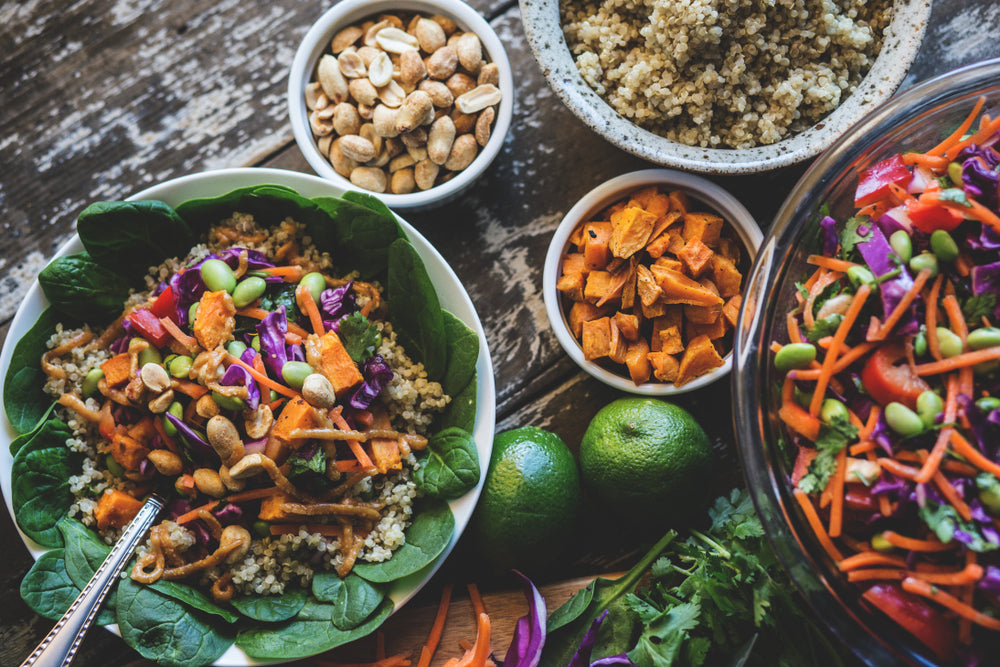
Switch to a Plant-Based Diet
Jun 30 , 2022
Making the leap to a full-blown plant-powered diet can sound daunting. But with the right approach and resources, it really needn’t be. There’s no one-size-fits-all way to transition. Some people can go cold-turkey (pardon the pun) overnight, while others may need to eliminate meat and dairy gradually. Maybe a plant-based diet means reducing the amount of meat you're currently eating. Or maybe it means completely cutting out all meat and meat-related products -- like cheeses, eggs, yogurt, and cream.
A plant-based diet comes as advertised. It's focused on fruits, vegetables, beans, nuts, legumes, seeds, whole grains, and vegetable oils like olive oil. You can certainly reorient your diet primarily toward plants and still eat some meat and dairy, including eggs. A lot of people do. For example, people who enjoy the Mediterranean diet are still said to be following a plant-based diet, which includes some fish and lean meats.

Let’s understand What is a plant-based diet?
Many people confuse a plant-based diet with a vegan diet but they are not the same. A vegan diet is one that is completely void of animal-sourced foods (meat, poultry, dairy, eggs, fish, etc.), and often those following a vegan diet will also follow a vegan lifestyle meaning they don’t usually use any animal-based products like leather or wool. While a vegan diet is free of animal products, it doesn’t necessarily mean it’s free of sugar, refined flours, or processed foods as we all know there’s no shortage of vegan donuts, cookies, Mac & Cheez, and croissants on the market.
And there's an additional way that plant-based diets are good for the gut. The diet is also environmentally sustainable, so it's healthy for the planet, too.
So good, you're ready to go. Here are a few suggestions to keep in mind as you're switching to a healthy plant-based diet:
1. Take small steps
Like any other dietary change, adopting a plant-based lifestyle can take time. Go at your own pace. And don’t be concerned if you need to take it slow. Ultimately, you need to determine the best approach for you. Making small changes to your everyday meals is one of the simplest ways to increase the number of plant foods you pack into your diet. Why not start by having a meat-and dairy-free day a week? It’s great to have the big end goal of eating a fully plant-based diet to get excited about but don’t feel pressured to get there right away. Instead, embrace the journey, and respect that it’s gonna take some work. Alternatively, try changing one meal at a time: have plant-filled breakfasts on the first week, and then add plant-rich lunches on week two. You could even swap to having oat, coconut, or soya milk in your coffee and tea.
2. Switch your snacks & Try new things
There’s more to plant-based cuisine than tofu and meat substitutes. In fact, This is an easy one. Instead of packaged snacks, head to the bulk section of the grocery store and load up on roasted nuts and seeds, and dried fruits, and make your own healthy snack mix. Toss some dark chocolate nibs in there for the occasional bonus bite! Leaving your comfort zone and trying new foods will take your taste buds on a tantalizing voyage of flavors and textures; it will inspire you to use plants in new, delicious ways. If you’re looking for a starting point, Indian, Ethiopian, Greek, and Middle Eastern cuisines are home to some of the most scrumptious plant-centered recipes
3. Avoid meat and processed food intake.
Instead of going cold turkey from the beginning, start by changing the proportion of plant and animal-based foods on your plate. This will give your mind and body time to accommodate the new diet. Make simple changes like adding a large portion of salad or a fresh fruit bowl to your daily meals. Next, get rid of meat and dairy products you don't like much anyway. And gradually work on swapping animal-based ingredients with plant-based alternatives in your favorite recipes. Create a full healthy environment that will automatically lead to a successful plant-based diet.
4. Go easy on yourself.
A veggie-centric diet can require additional prep time, as you peel and chop and prep. Finding shortcuts can be helpful, particularly as you're getting started on the diet. If you like, buy pre-prepped vegetables and packaged salad greens to cut down on prep time and make it easier to eat more fresh vegetables. Of course, this suggestion presents a packaging waste issue, which may trump the time-saving benefits of bagged and pre-prepped veggies and lettuces. You can also find mixed greens in bulk in some grocery stores.
Starting a plant-based diet is easier now because you’ve just read this article. So, go ahead. Try a week or a day of eating only plant-based foods, support our vision, and join our community to lead a healthy lifestyle.

